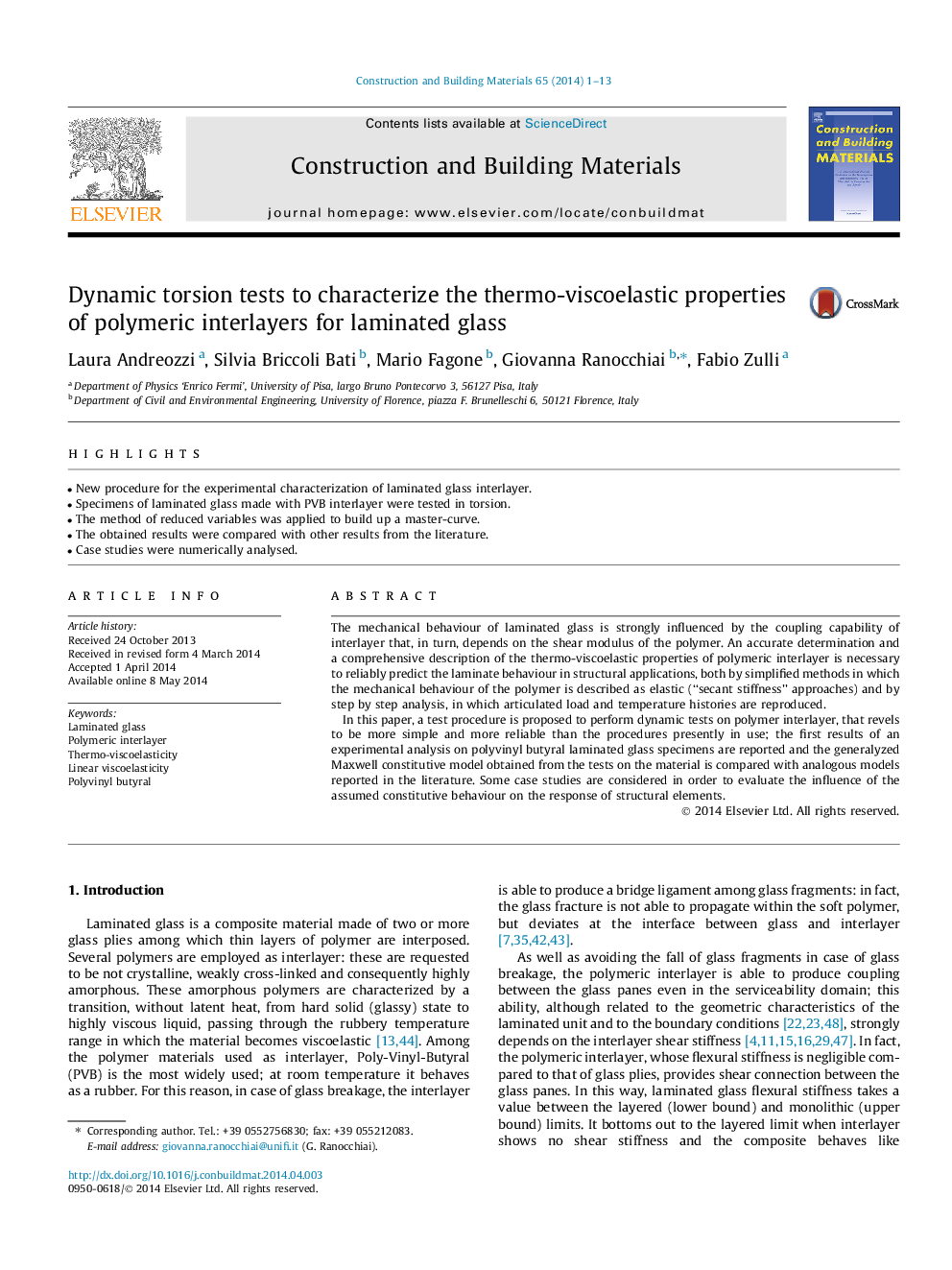| Article ID | Journal | Published Year | Pages | File Type |
|---|---|---|---|---|
| 257470 | Construction and Building Materials | 2014 | 13 Pages |
•New procedure for the experimental characterization of laminated glass interlayer.•Specimens of laminated glass made with PVB interlayer were tested in torsion.•The method of reduced variables was applied to build up a master-curve.•The obtained results were compared with other results from the literature.•Case studies were numerically analysed.
The mechanical behaviour of laminated glass is strongly influenced by the coupling capability of interlayer that, in turn, depends on the shear modulus of the polymer. An accurate determination and a comprehensive description of the thermo-viscoelastic properties of polymeric interlayer is necessary to reliably predict the laminate behaviour in structural applications, both by simplified methods in which the mechanical behaviour of the polymer is described as elastic (“secant stiffness” approaches) and by step by step analysis, in which articulated load and temperature histories are reproduced.In this paper, a test procedure is proposed to perform dynamic tests on polymer interlayer, that revels to be more simple and more reliable than the procedures presently in use; the first results of an experimental analysis on polyvinyl butyral laminated glass specimens are reported and the generalyzed Maxwell constitutive model obtained from the tests on the material is compared with analogous models reported in the literature. Some case studies are considered in order to evaluate the influence of the assumed constitutive behaviour on the response of structural elements.
